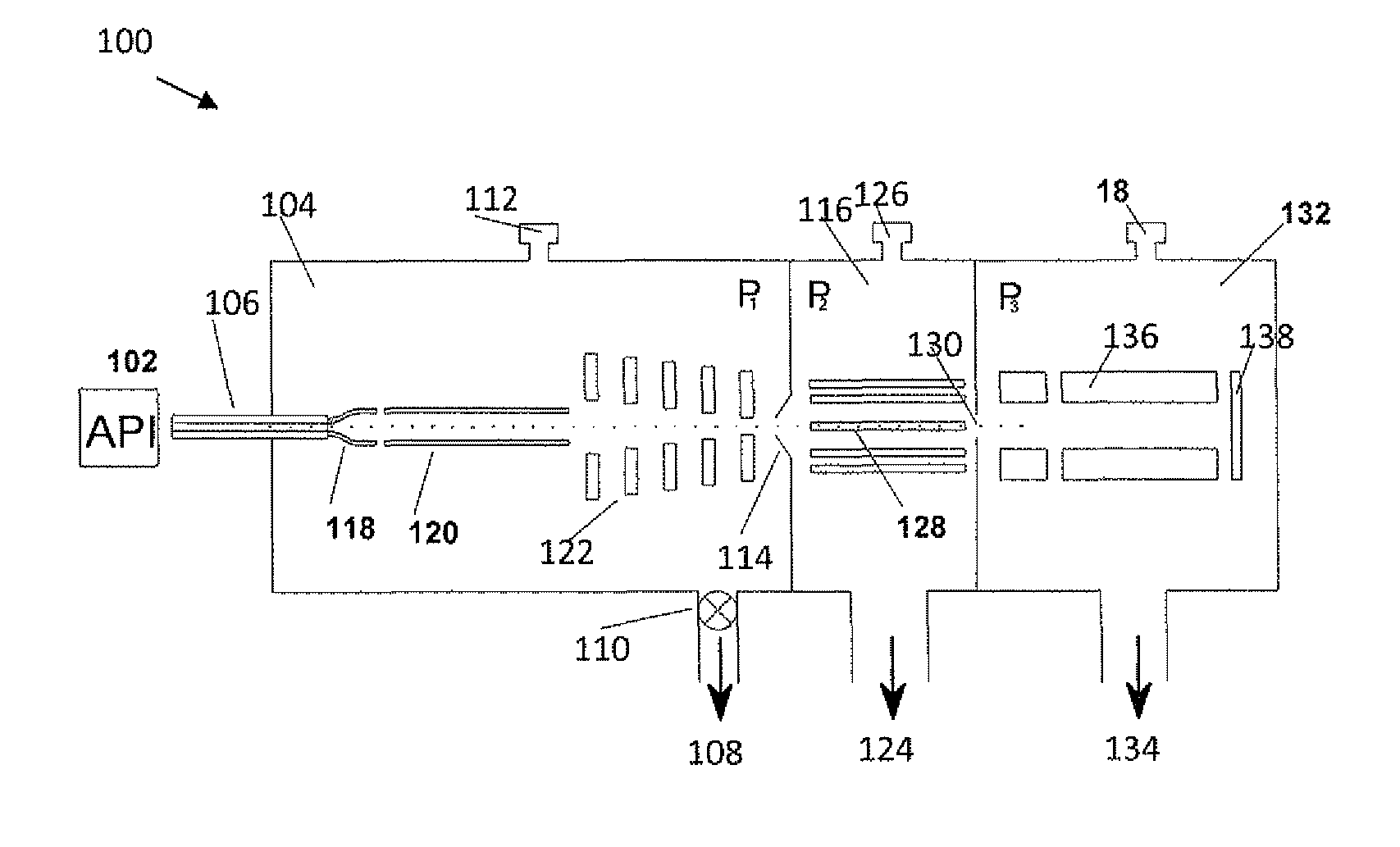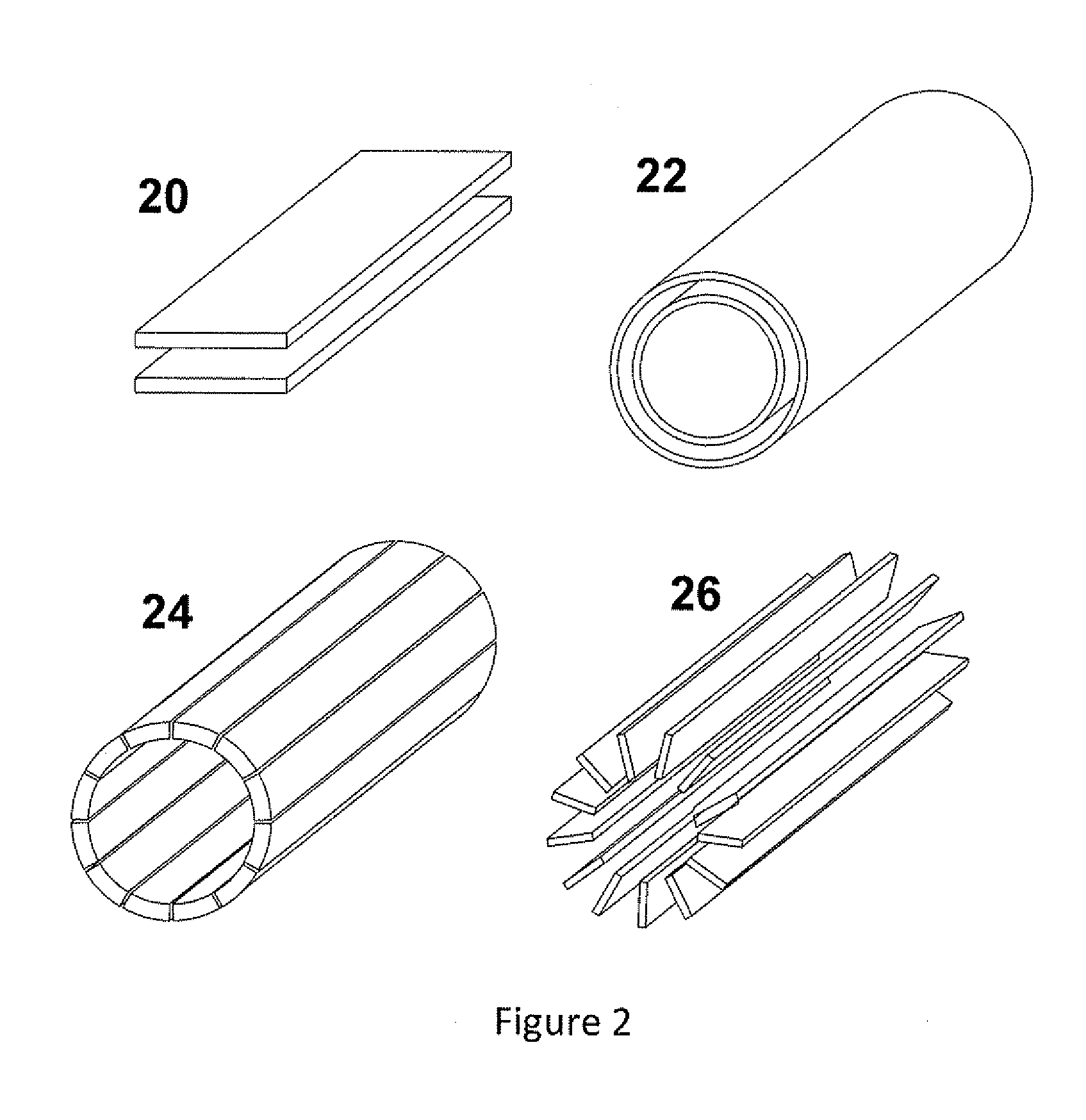Ion analysis apparatus and method of use
a technology of ion analysis apparatus and mass spectrometer, which is applied in the direction of instruments, particle separator tube details, separation processes, etc., can solve the problems of low efficiency of transmission of ions into the mass spectrometer's vacuum enclosure, limited mobility separation, and adversely affecting sampling efficiency
- Summary
- Abstract
- Description
- Claims
- Application Information
AI Technical Summary
Benefits of technology
Problems solved by technology
Method used
Image
Examples
Embodiment Construction
[0233]Referring to FIG. 1, shown are basic principles and the mechanism for DMS separation based on the non-linear ion mobility dependence on electric field and pressure. Ions are entrained in a gas stream 1 established between two electrodes 2. The high frequency asymmetric waveform 3 is applied to one of the two electrodes. Superimposed to the waveform is a slow compensation dc voltage 4. The frequency of the asymmetric waveform usually spans between a few hundreds of KHz to ˜1 MHz, while that of the “sawtooth” DC ramp 4 is −1.
[0234]Still referring to FIG. 1, separation of ions is possible using waveforms substantially different than the pure rectangular waveform. A family of waveforms based on quasi-sinusoidal variations of the voltage as a function of time are widely used; these are the bi-sinusoidal, the clipped sinusoidal or other substantially rectangular waveforms. Asymmetric waveforms are designed so that the area of the positive pulse matches that of the negative pulse, A1...
PUM
| Property | Measurement | Unit |
|---|---|---|
| frequency | aaaaa | aaaaa |
| pressure | aaaaa | aaaaa |
| frequency | aaaaa | aaaaa |
Abstract
Description
Claims
Application Information
 Login to View More
Login to View More - R&D
- Intellectual Property
- Life Sciences
- Materials
- Tech Scout
- Unparalleled Data Quality
- Higher Quality Content
- 60% Fewer Hallucinations
Browse by: Latest US Patents, China's latest patents, Technical Efficacy Thesaurus, Application Domain, Technology Topic, Popular Technical Reports.
© 2025 PatSnap. All rights reserved.Legal|Privacy policy|Modern Slavery Act Transparency Statement|Sitemap|About US| Contact US: help@patsnap.com



